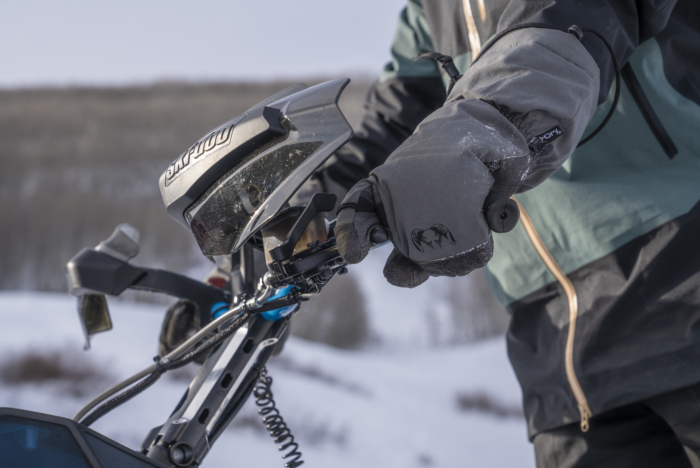The North Face has gone all-in with its new breathable-waterproof technology, FUTURELIGHT. It hits the market with several products today. I joined a team of athletes up in the high country to dive deeper into this emerging jacket technology.
FUTURELIGHT. If you follow the outdoor apparel market, you know the name. The North Face put huge marketing resources into its proprietary waterproof-breathable material last year and made waves at the Outdoor Retailer Winter Market show, earning myriad awards for innovation.
That’s because the brand makes some big claims about the fabric, namely very high levels of breathability while maintaining waterproofness. Now, FUTURELIGHT is hitting the market. We got our hands on the new “nanospun” Flight FUTURELIGHT Jacket ($280) to see what all the fuss is about.
In short: While our testing is still limited, this may be the best waterproof-breathable running jacket yet. It weighs just 7.3 ounces (women’s small) yet provides a windproof, waterproof, breathable, and air-permeable shell that will shed precipitation.
(Editor’s note: This article previously listed an incorrect weight for the jacket, provided by the brand. We are working to clarify the discrepancy).
Its standout features are breathability and weight, which seem to outshine many competing products. It’s worth noting that TNF has been very tight-lipped about in-house testing. We asked for specific water column and breathability test results, and the brand said it will not disclose them.
But in makeshift tests with water, the membrane does an admirable job of staying dry inside when soaked (even with some pressure) on the outside. We’re optimistic about this one so far, and we’ll update this article once we’ve had a chance to run in it more in rain, snow, and sleet this fall.
FUTURELIGHT: Does It Work?
Back in April, GearJunkie’s own Stephen Regenold tested The North Face’s early FUTURELIGHT products (namely the Summit Series L5 LT jacket) in a snowy, backcountry skiing scenario. Last week, I tested a product on the opposite end of the spectrum: in warm fall weather.
The North Face hosted a group of us up in Rocky Mountain National Park to show its new products. Pulling into the park on the first day, it was 63 degrees and slightly breezy. It was gorgeous weather for a hike but not so great for testing a waterproof jacket.
In the afternoon, five of us donned FUTURELIGHT Flight jackets (available for men and women) and followed on the heels of renowned mountaineer Pete Athans.
We headed up past a crowded trailhead towards a lake, where Athans described some notable features of the landscape. (Athans has not only tested FUTURELIGHT products on Mt. Everest but also closer to home on Mt. Rainier.)















